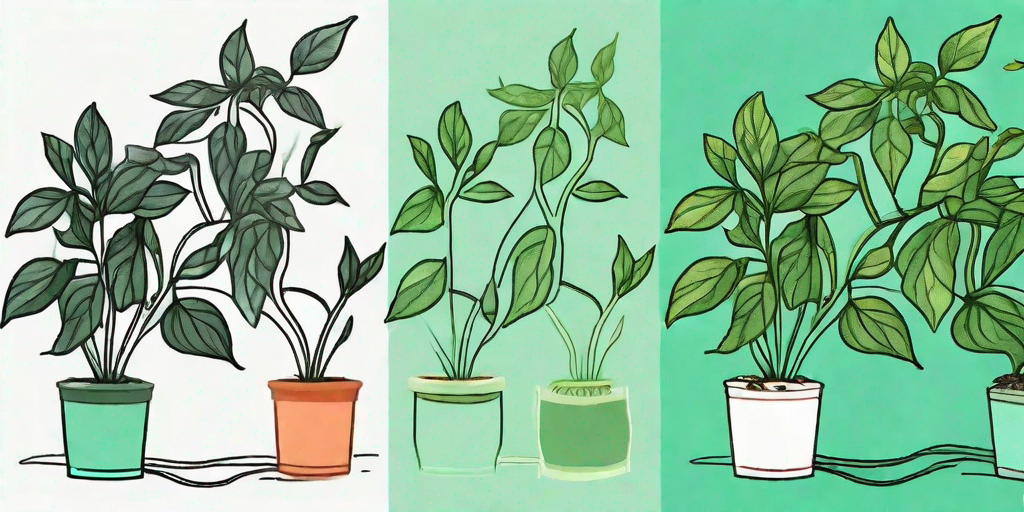
Pepper plants are like the drama queens of the vegetable world. They love the spotlight, demand constant attention, and if their needs aren't met, they'll wilt faster than a diva without her morning latte. But don't worry, with a little TLC and the right knowledge, you can turn your wilting pepper plant into a thriving, fruit-bearing superstar.
Understanding Your Pepper Plant's Needs
Before we dive into the nitty-gritty of pepper plant revival, it's important to understand what makes these plants tick. Pepper plants are tropical natives, which means they love warm temperatures, plenty of sunlight, and a good amount of moisture. They're also a bit finicky about their soil, preferring a well-draining mix that's rich in organic matter.
However, like any good diva, pepper plants can be a bit temperamental. Too much water, and they'll drown. Too little, and they'll dry up. Too much sun, and they'll burn. Too little, and they'll sulk in the shadows. It's all about finding the right balance.
Temperature
Pepper plants prefer temperatures between 70 and 85 degrees Fahrenheit. Anything below 60 degrees can cause them to wilt, while anything above 90 degrees can cause them to drop their blossoms and stop producing fruit.
So, if your pepper plant is wilting, the first thing to check is the temperature. If it's too hot, move your plant to a cooler location. If it's too cold, consider using a heat mat or a grow light to raise the temperature.
Light
Pepper plants need at least 6-8 hours of sunlight per day. If your plant isn't getting enough light, it may start to wilt. Consider moving your plant to a sunnier location, or supplementing with a grow light.
However, too much direct sunlight can also be harmful, especially in hot climates. If your plant's leaves are turning yellow or brown, it may be getting sunburned. In this case, move your plant to a location with filtered sunlight, or provide some shade during the hottest part of the day.
Reviving Your Wilting Pepper Plant
Now that we've covered the basics, let's get down to the business of reviving your wilting pepper plant. Here are some steps you can take to nurse your plant back to health.
Step 1: Check the Watering
Overwatering is a common cause of wilting in pepper plants. If the soil is waterlogged, the roots can't breathe, and the plant will start to wilt. To check if your plant is getting too much water, stick your finger into the soil. If it's wet more than an inch below the surface, you're overwatering.
On the other hand, underwatering can also cause wilting. If the soil is dry more than an inch below the surface, your plant is probably thirsty. In this case, give your plant a good soak, then let the soil dry out before watering again.
Step 2: Adjust the Light
If your plant is getting too much or too little light, it may start to wilt. Adjust the lighting as needed, either by moving your plant to a sunnier or shadier location, or by using a grow light.
Remember, pepper plants need at least 6-8 hours of sunlight per day, but they also need some shade during the hottest part of the day. If your plant's leaves are turning yellow or brown, it may be getting sunburned. In this case, provide some shade during the hottest part of the day.
Step 3: Feed Your Plant
Pepper plants are heavy feeders, which means they need a lot of nutrients to grow and produce fruit. If your plant is wilting, it may be lacking in essential nutrients.
Feed your plant with a balanced, organic fertilizer every 2-4 weeks during the growing season. Look for a fertilizer with a balanced ratio of nitrogen, phosphorus, and potassium, as these are the nutrients that pepper plants need the most.
Preventing Future Wilting
Once you've revived your wilting pepper plant, you'll want to prevent future wilting. Here are some tips to keep your plant healthy and thriving.
Maintain a Consistent Watering Schedule
Pepper plants like a consistent watering schedule. Water your plant thoroughly, then let the soil dry out before watering again. This will prevent both overwatering and underwatering, which can both cause wilting.
Provide the Right Amount of Light
Make sure your plant is getting at least 6-8 hours of sunlight per day, but also some shade during the hottest part of the day. This will prevent both underlighting and sunburn, which can both cause wilting.
Feed Your Plant Regularly
Feed your plant with a balanced, organic fertilizer every 2-4 weeks during the growing season. This will provide your plant with the nutrients it needs to grow and produce fruit, and prevent nutrient deficiencies, which can cause wilting.
Frequently Asked Questions
Why is my pepper plant wilting after transplant?
Transplant shock is a common cause of wilting in pepper plants. After transplant, your plant needs some time to adjust to its new environment. Keep the soil moist, but not waterlogged, and provide some shade for the first few days after transplant.
Why are the leaves on my pepper plant turning yellow?
Yellow leaves can be a sign of several problems, including overwatering, underwatering, nutrient deficiencies, or sunburn. Check the watering, lighting, and feeding conditions, and adjust as needed.
Can a wilted pepper plant be saved?
Yes, a wilted pepper plant can often be saved, as long as the problem is addressed early. Follow the steps in this guide to revive your wilting pepper plant.
And there you have it! With a little love, attention, and the right care, your wilting pepper plant can be revived and go on to produce a bountiful harvest. Remember, pepper plants are like divas - they require a bit of pampering, but the rewards are well worth it!











